The Buda Castle is constantly beautifying within the framework of the National Hauszmann Program. Recently, the southern connecting wing, which includes the Riding Hall, the Royal Guard, the Csikós Court, the Matthias Well, and the St. Stephen's Hall have also been handed over.
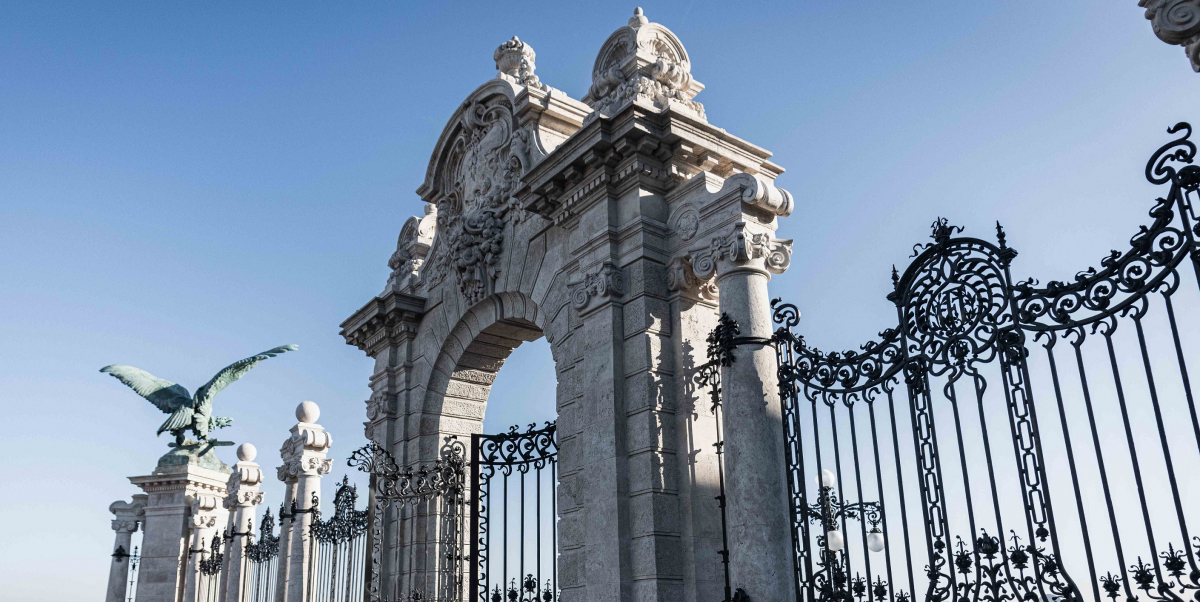
Habsburg Gate and the Statue of Turul from Szent György Square (Photo: Róbert Juharos / pestbuda.hu)
A few days before Christmas, visitors were able to take possession of another cult site: on December 14, one of the most beautifully situated and overlooking areas of the Pest and Danube panorama was handed over, along with the Habsburg Gate, the Fountain of the Fishing Children and the nearly nine-ton Turul statue.
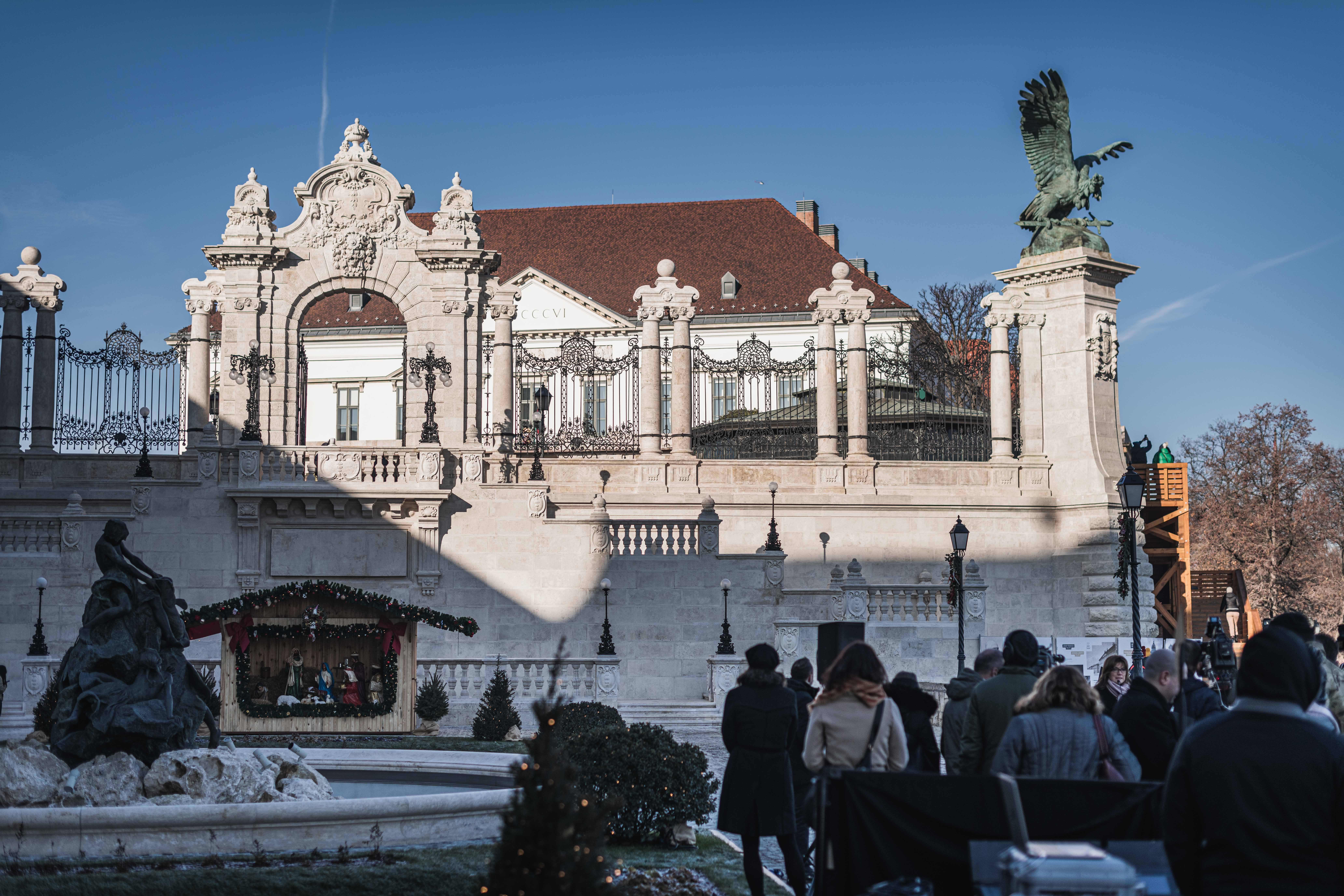
The renovated terrace with the Habsburg Gate, the Fountain of the Fishing Children and the Turul statue (Photo: Róbert Juharos / pestbuda.hu)
During the turn-of-the-century expansion of the Buda Castle, the artistic Habsburg Gate was designed by Alajos Hauszmann.
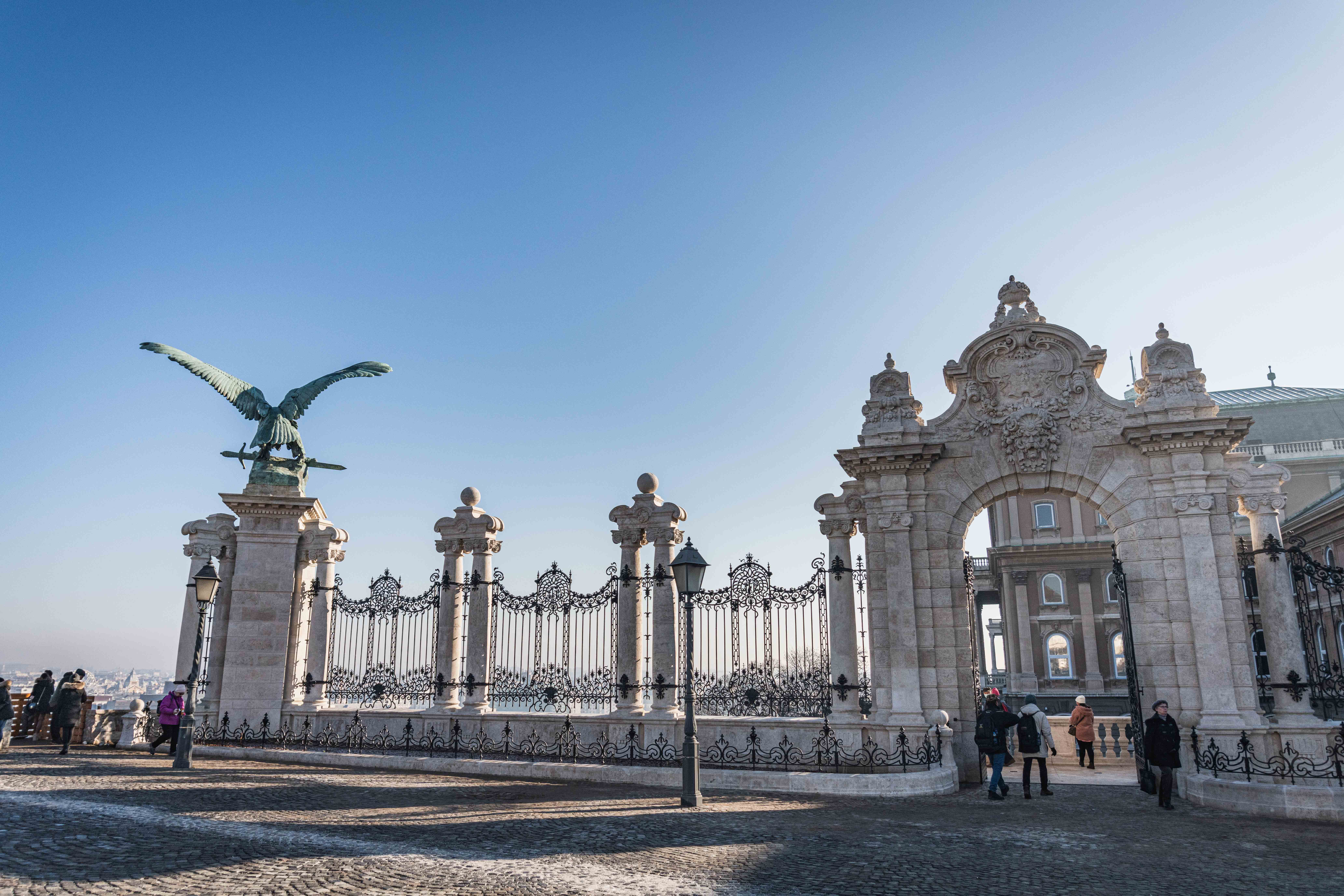
The renewed Habsburg Gate and the Turul statue from Szent György Square (Photo: Róbert Juharos / pestbuda.hu)
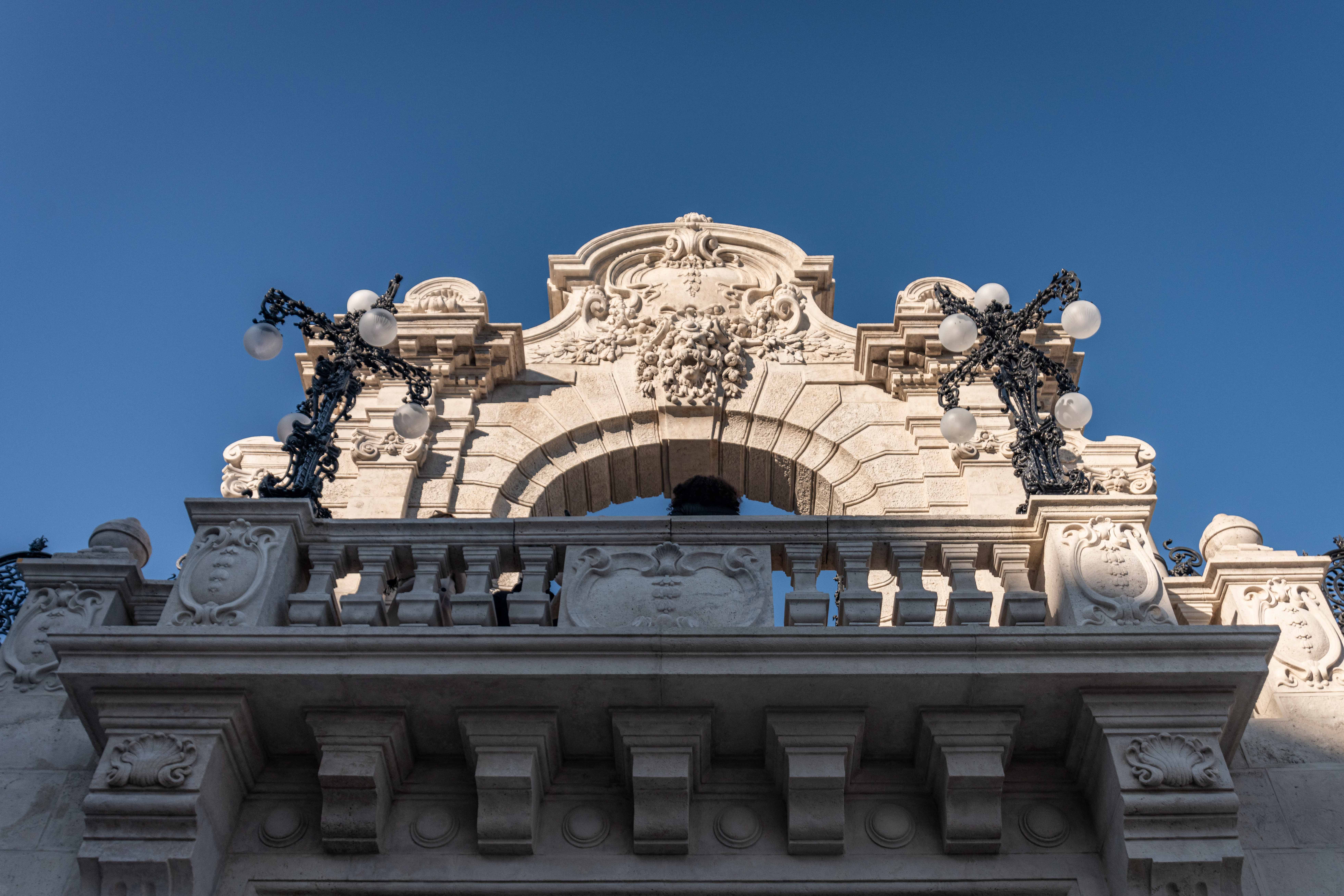
The Habsburg Gate designed by Alajos Hauszmann and the lamps made by Gyula Jungfer (Photo: Róbert Juharos / pestbuda.hu)
The Fountain of the Fishing Children was completed in 1900 according to the plans of Károly Senyei, which was later forced to move several times, but we can finally see the original pool again in its former location. The Turul statue of the sculptor Gyula Donáth was completed in 1905 to close the extensions of the Buda Castle Palace, which returned to its original location a few days ago.
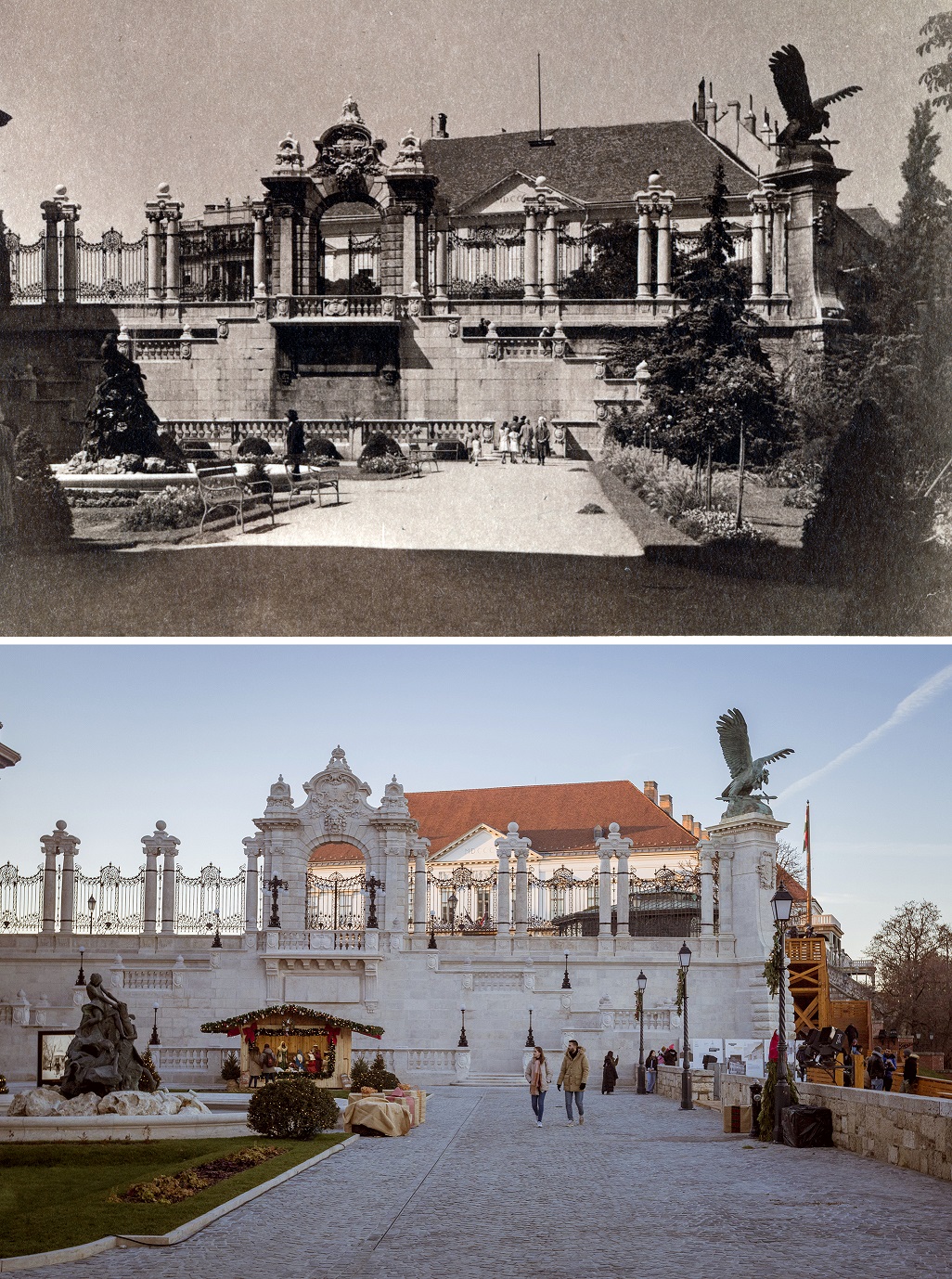
The original state in the early 1900s and the current state in 2021 (Photo: Várkapitányság)
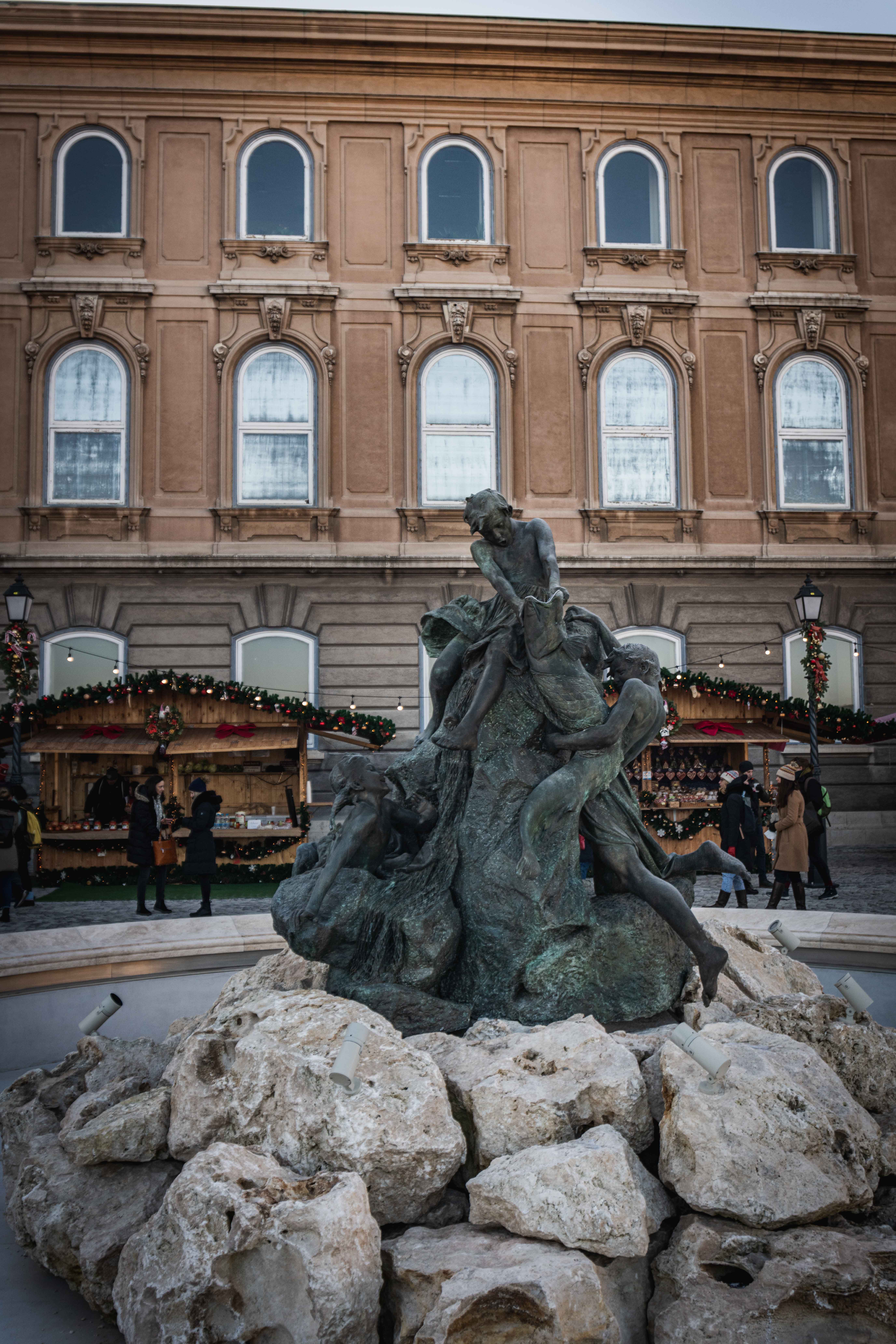
The renovated Fountain of the Fishing Children, which was originally handed over in 1900 (Photo: Róbert Juharos / pestbuda.hu)
On the renovated terrace we can not only admire the renovated monuments, but for the festive period there is a nativity scene and an Advent fair, where in addition to mulled wine, hot tea, chimney cake and fresh strudel there is also a special outdoor exhibition.
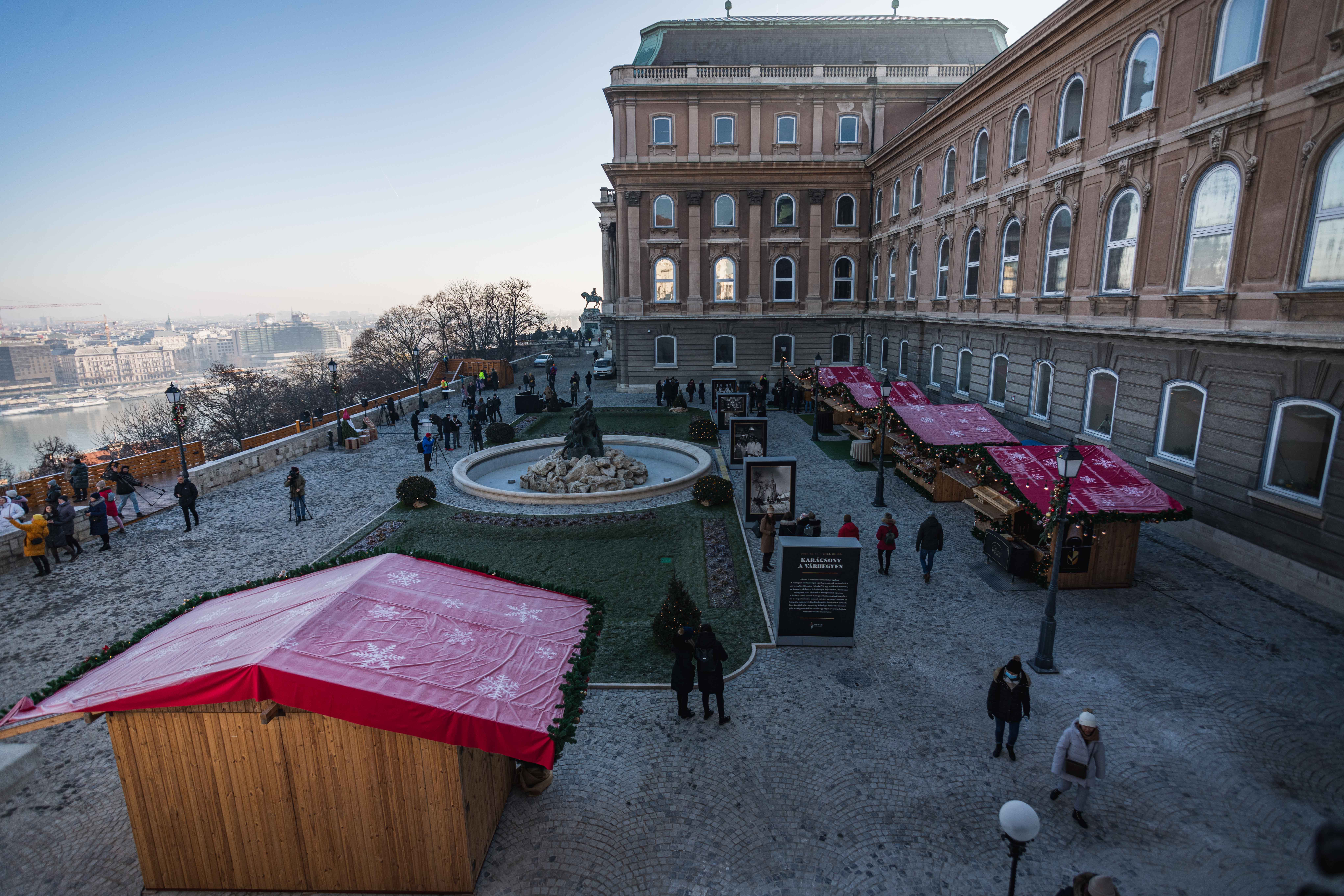
A small Advent fair and an outdoor exhibition make the terrace even more cozy (Photo: Róbert Juharos / pestbuda.hu)
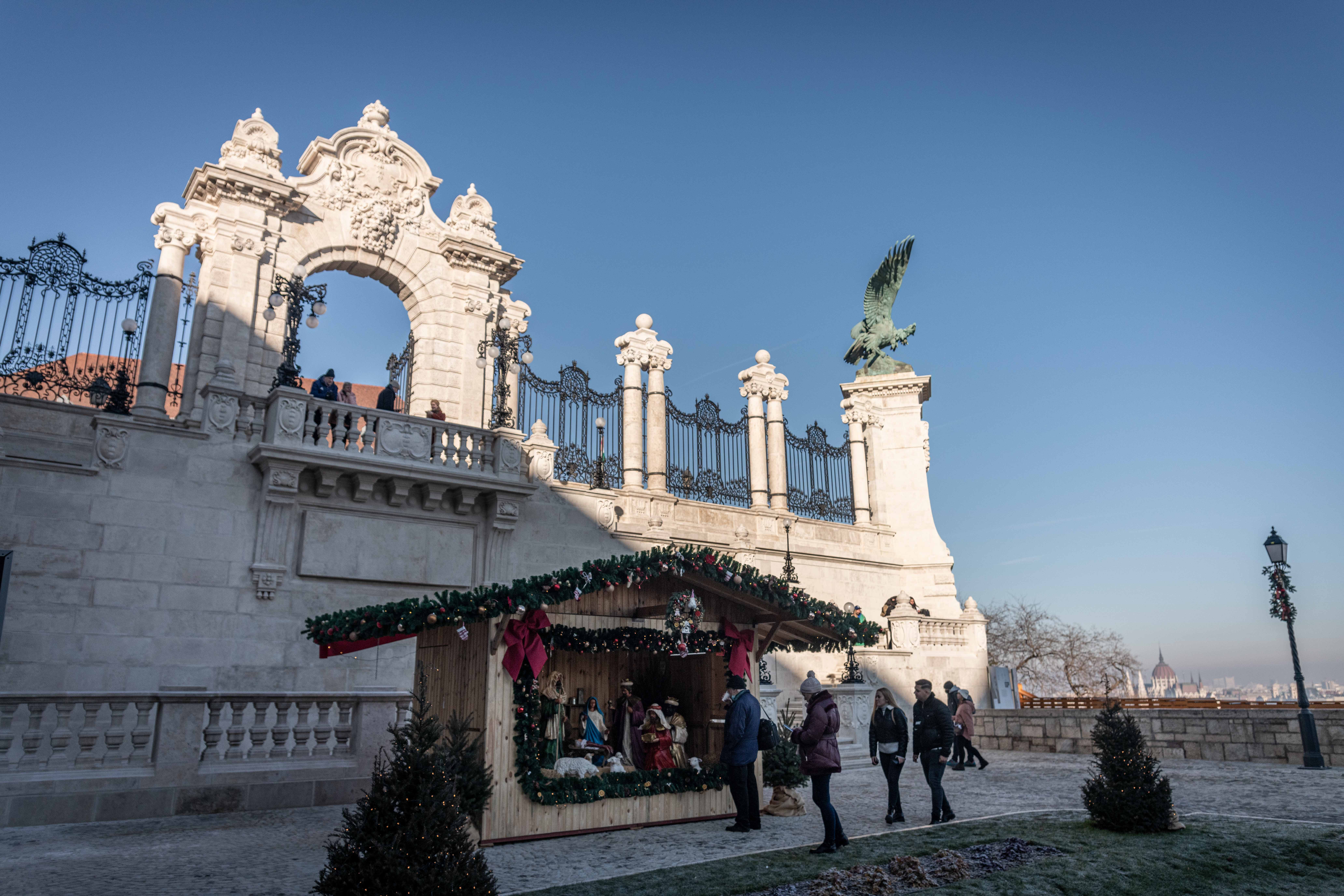 Nativity scene under the Habsburg Gate, on the terrace of the palace (Photo: Róbert Juharos / pestbuda.hu)
Nativity scene under the Habsburg Gate, on the terrace of the palace (Photo: Róbert Juharos / pestbuda.hu)
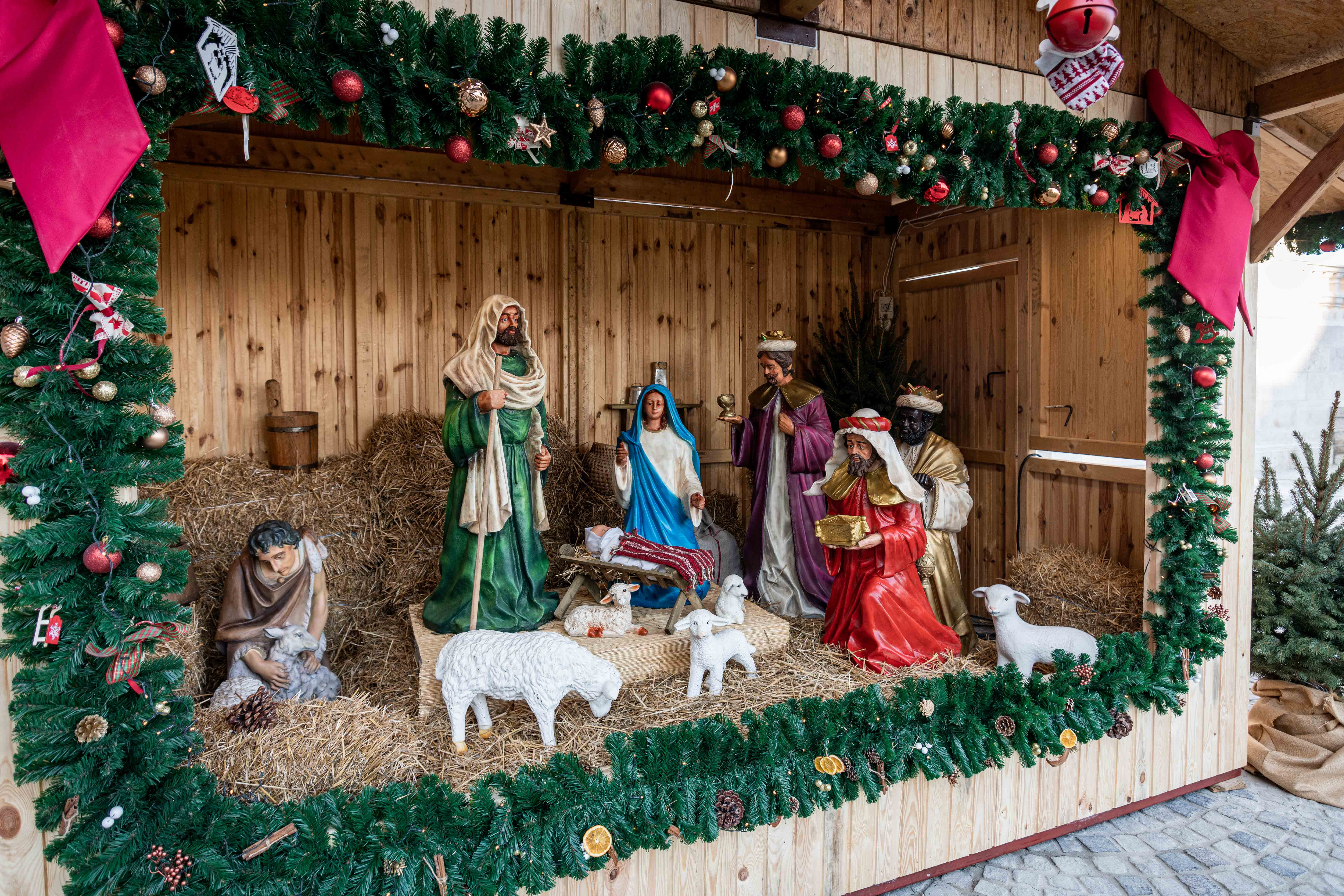
The nativity scene can be seen together with the Advent fair until 6 January (Photo: Róbert Juharos / pestbuda.hu)
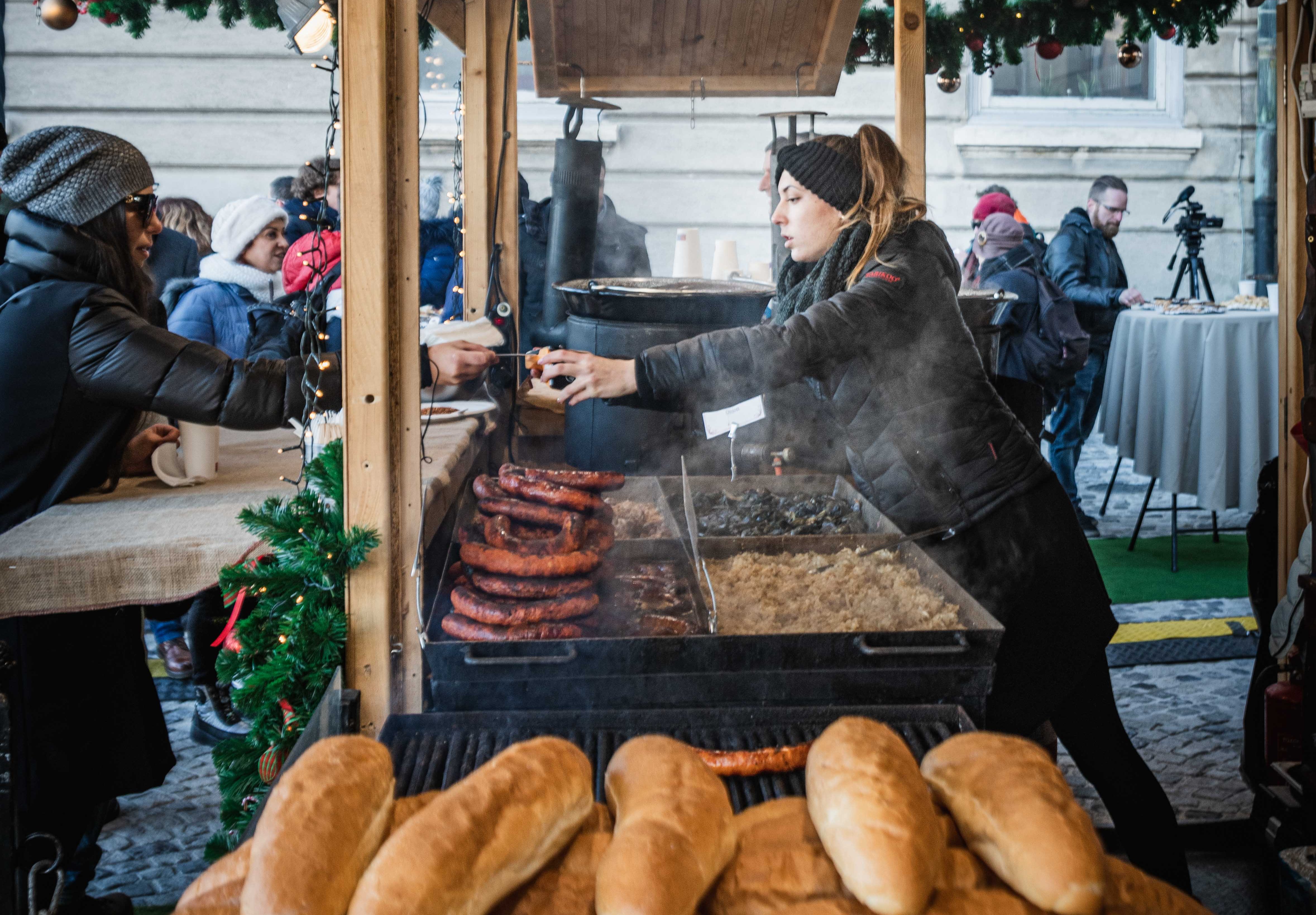
Delicious food and hot drinks await visitors in the renovated area (Photo: Róbert Juharos / pestbuda.hu)
At the exhibition entitled Karácsony a Várhegyen [Christmas on Castle Hill] , visitors can look behind the curtains of Christmas in the Castle District of the last century, where they can learn about the old traditions of Buda, but also about how the royal guards celebrated at Christmas, or how famous confectioneries awaited their distinguished guests and children who were snow-fighting or sledding. Now let’s take a closer look at the history and past of the monuments that have been handed over.
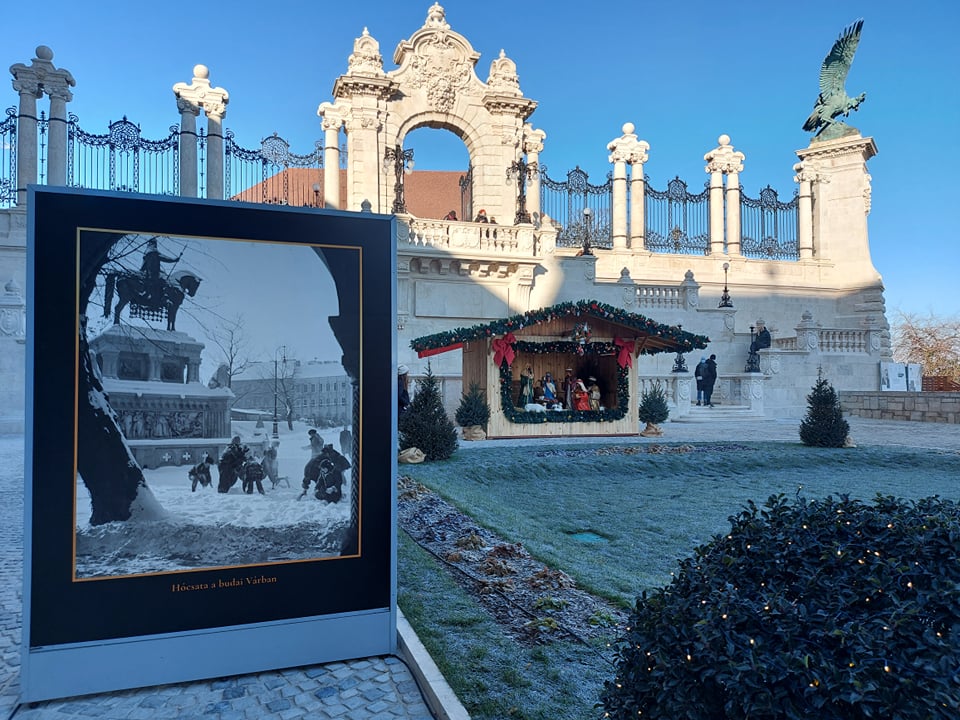
An open-air exhibition on the Savoyai terrace entitled Christmas on the Castle Hill (Photo: Gergely Földváry / pestbuda.hu)
The Habsburg Gate
The neo-baroque Habsburg Gate separating the royal palace and the castle district was designed by Alajos Hauszmann between 1902 and 1905. Its ironworks were made by Gyula Jungfer, as Alajos Hauszmann insisted on Jungfer's works, who have already proved his genius in countless places. He also did the metal-work for the Parliament and his talent got a standing applause at the 1896 Millennium Exhibition.
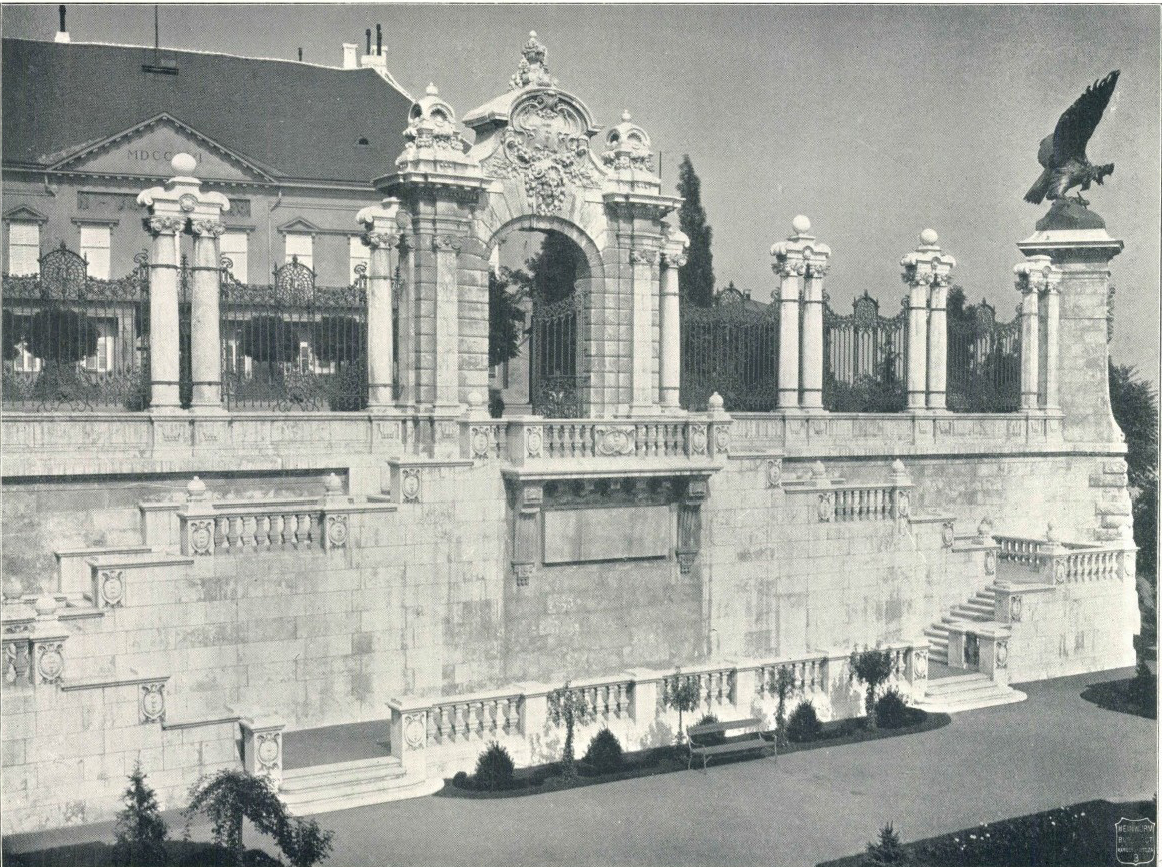
The Habsburg Gate with its stairs and the Turul statue (Photo: Magyar Pályázatok, August 1905)
At the turn of the century, the king awarded him the Knight's Cross of the Order of Franz Joseph, and then he received the title of court metalwork artisan, so it is no coincidence that the monogram of Franz Joseph also appears on the fence of the Habsburg Gate divided by double stone columns.
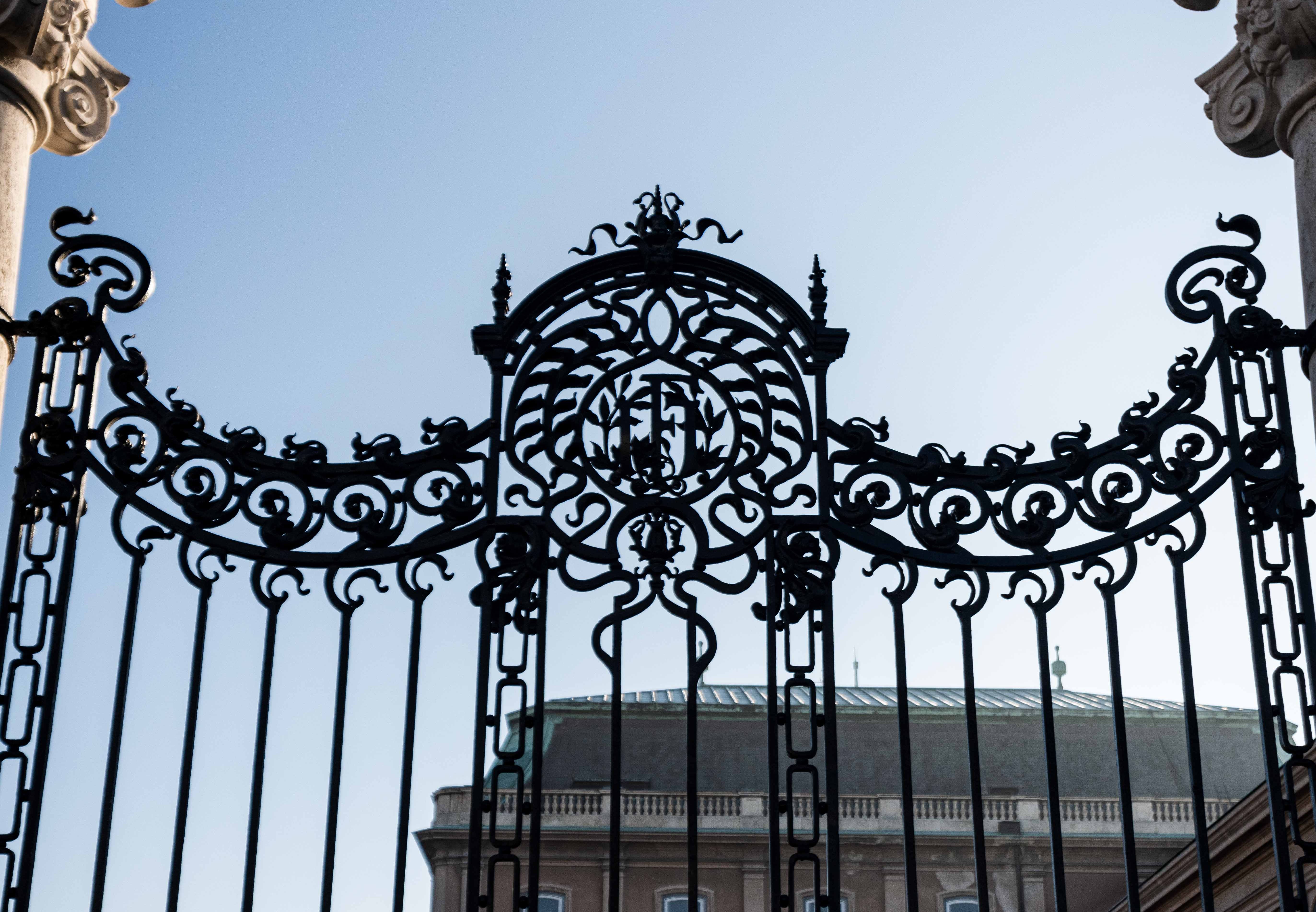
Monogram of Franz Joseph on the wrought iron fence made by Gyula Jungfer (Photo: Róbert Juharos / pestbuda.hu)
The ornate wrought-iron Habsburg Gate and the artistic fence next to the building facing Szent György Square were real jewels of Buda Castle until the siege of Budapest.
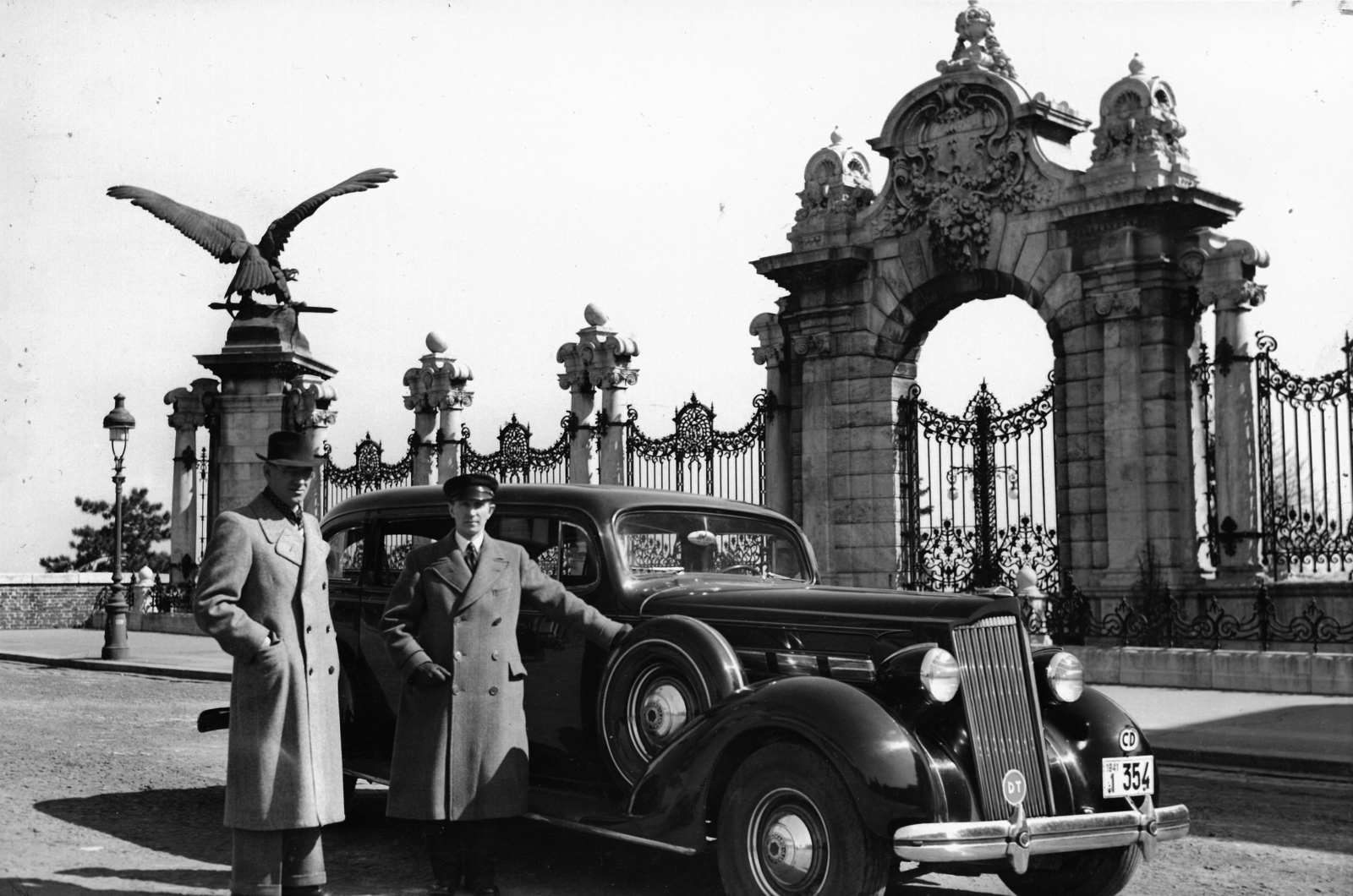
Swiss diplomat Carl Lutz can be seen in front of the Habsburg Gate in Szent György Square in 1943 (Photo: Archiv für Zeitgeschicte ETH Zürich / Fortepan No.: 105642)
The gate was damaged in World War II and although its ornaments were smashed and sawn down in several places after it, fortunately it was not completely destroyed. Finally, the gate was restored in the early 1980s, but it has also been eroded by the past 40 years, making it important to renovate it.
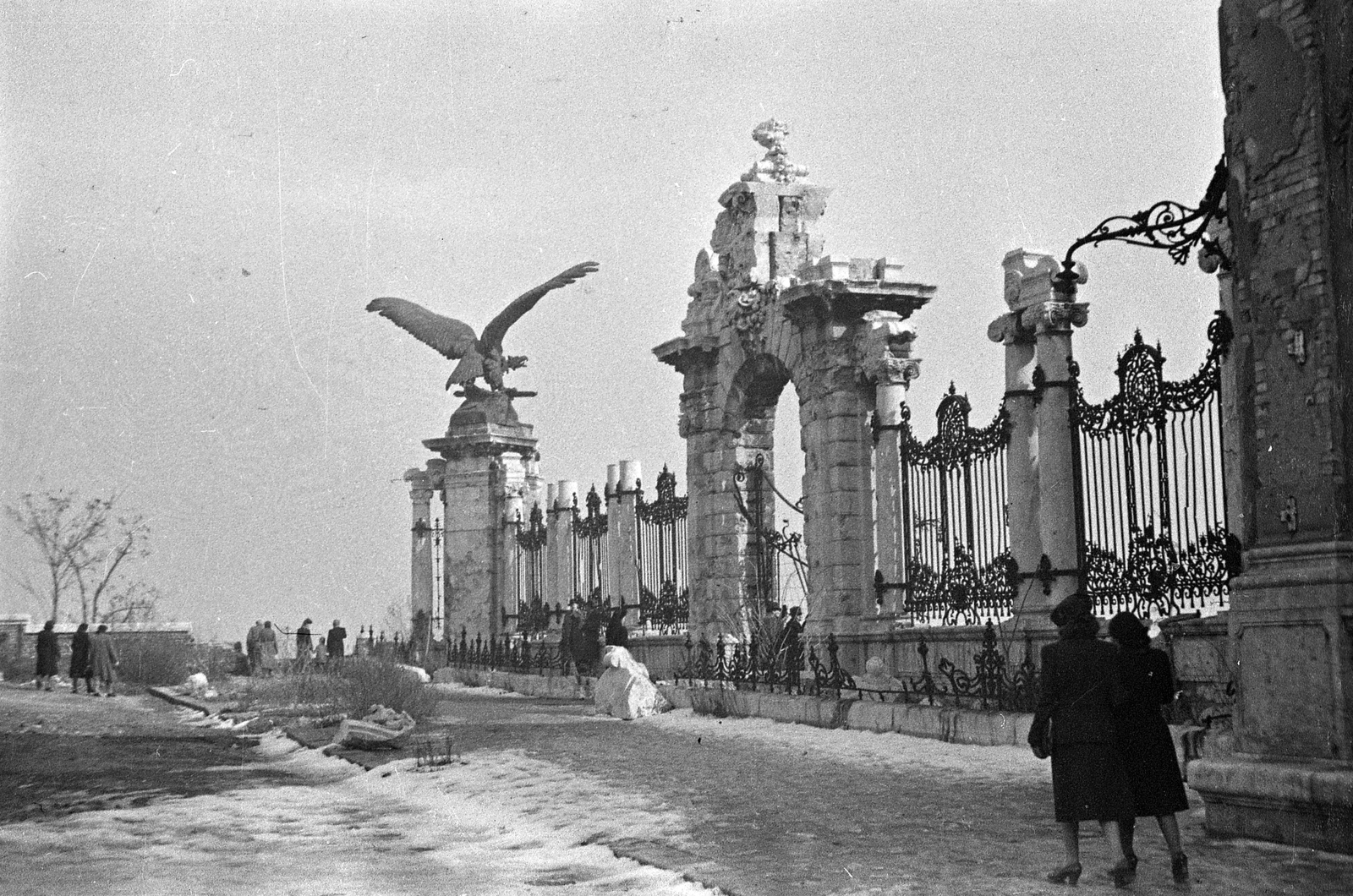
The Habsburg Gate, damaged during the siege, and the less damaged Turul statue in 1945 (Photo: Fortepan / No.: 24694)
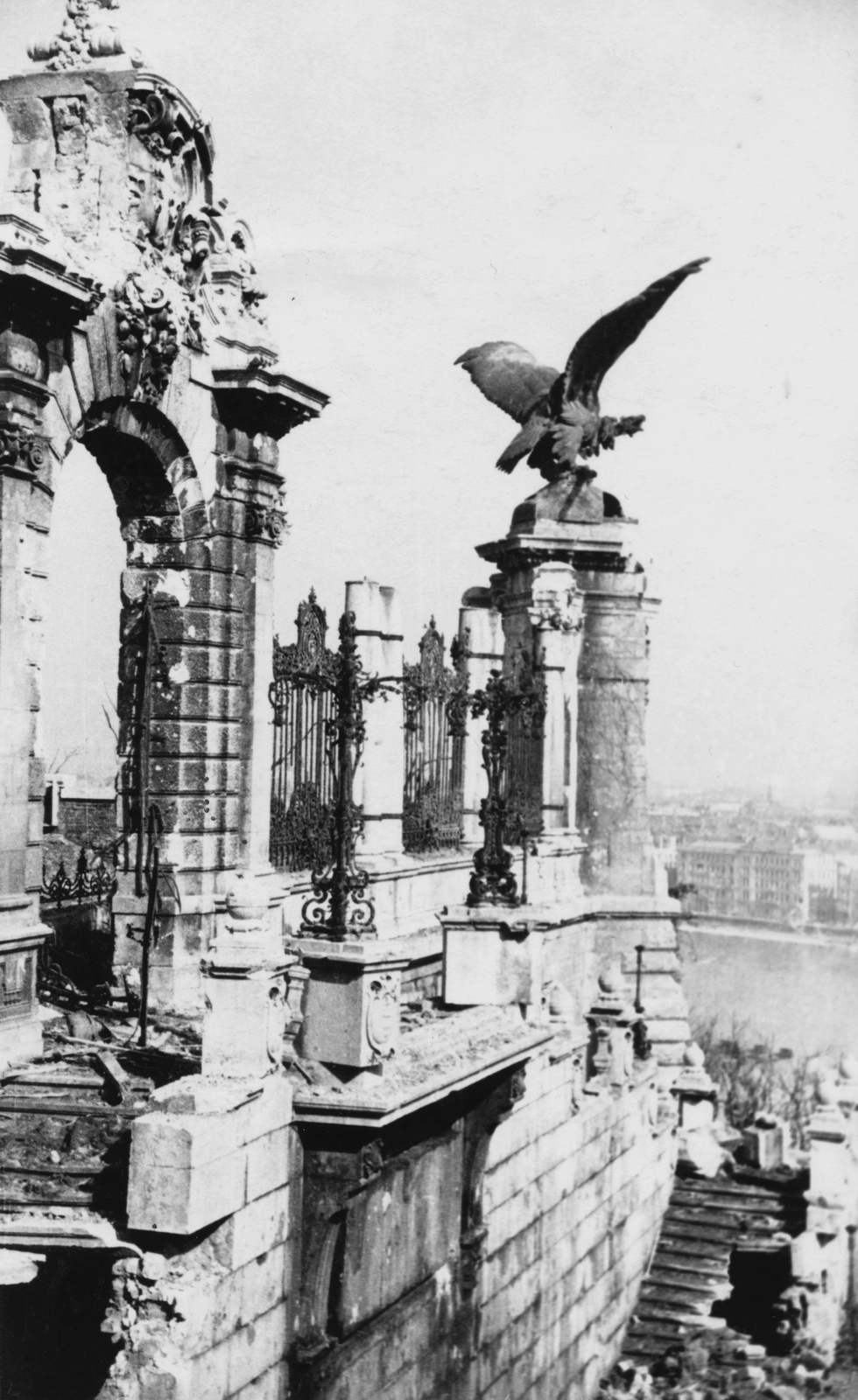
The damaged Habsburg Gate and stairs that became unusable after the siege (Photo: Fortepan No.: 31798)
Renovation of the now handed over Habsburg Gate began earlier this year. During the work, the stone surface of the gate and the metal wrought iron inserts were restored, the missing decorations were replaced and the gate could be reopened in full cross-section thanks to the new turntable solution.
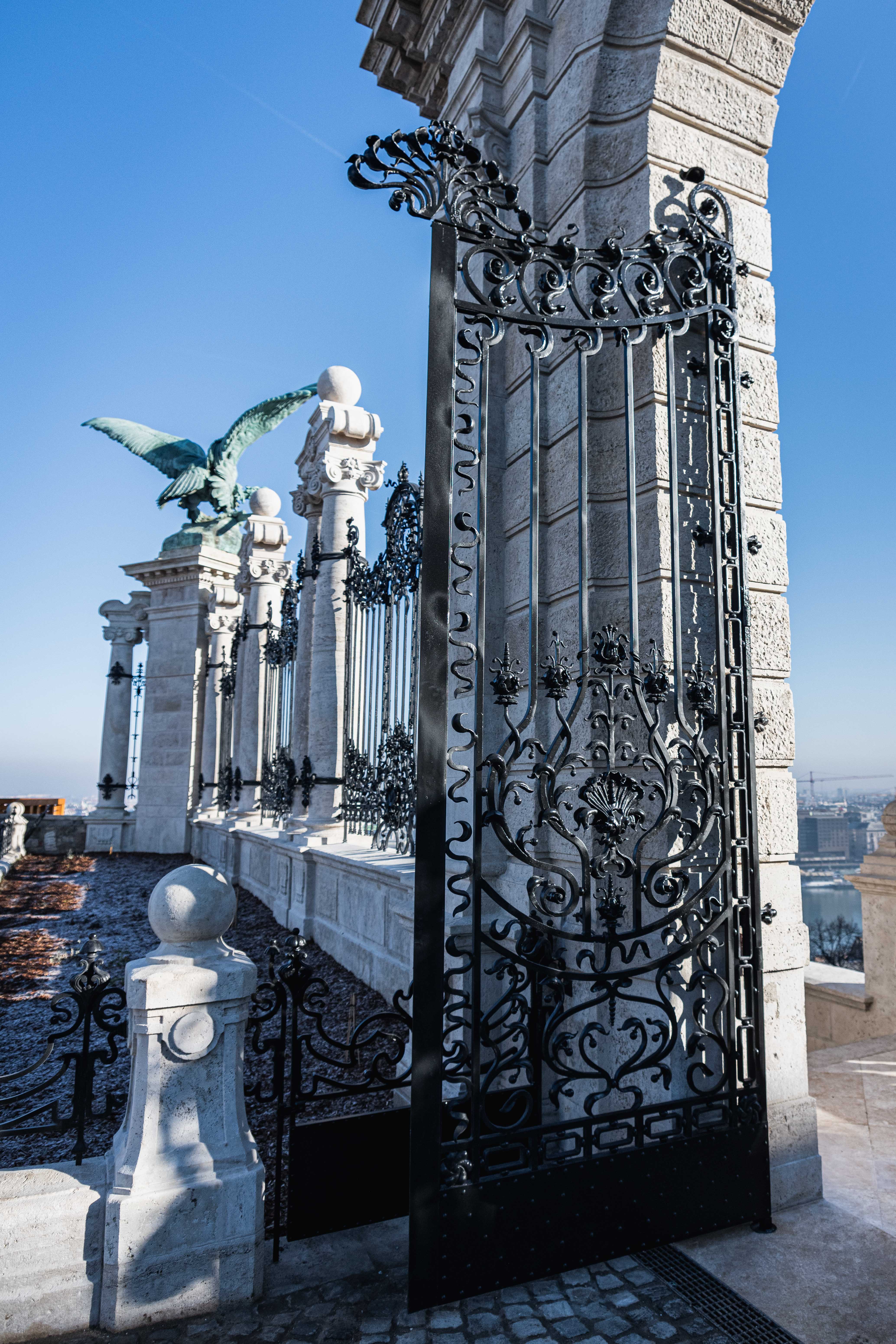
The door of the renovated gate can be opened in full cross-section (Photo: Róbert Juharos / pestbuda.hu)
The staircase from the Habsburg Gate, which connects Szent György Square with the Savoyai terrace one level down, has also been renewed. The staircase has also undergone a complete renovation and a new anti-slip cover, so it can be used with greater safety even in winter.
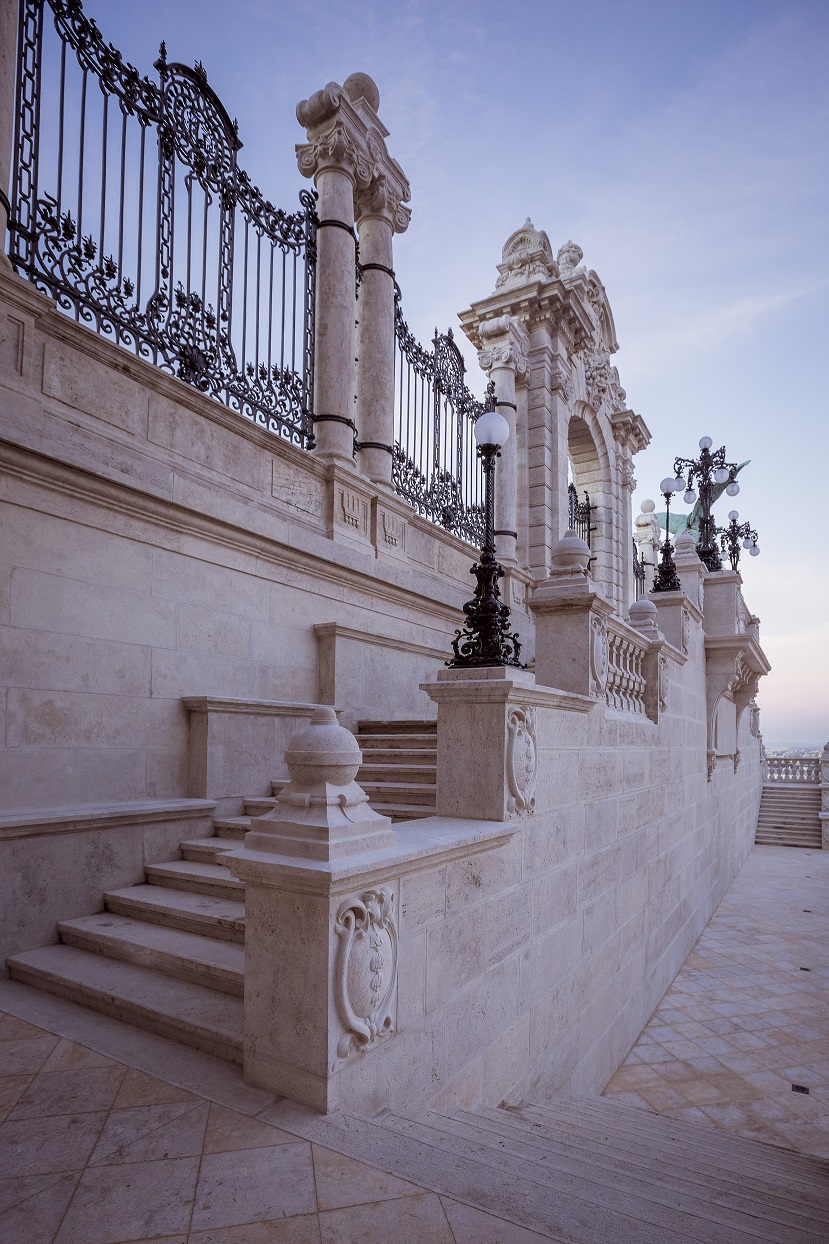
The modernized and renovated staircase that connects Szent György Square with the Savoyai terrace (Photo: Várkapitányság)
The Habsburg Gate and the fence belonging to it are closed on the side facing the castle wall by a thicker stone column, on the top of which is the statue of Turul, completed in 1905 by the sculptor Gyula Donáth. The statue was also completely renovated, which was handed over a few days ago, in early December, which we also reported in more detail .
Ornamental Fountain of the Fishing Children
After the handover of the Matthias Well last year, another popular ornamental well in the Buda Palace District, the Fountain of the Fishing Children, was completed this year. The original statue was designed by Károly Senyei in 1900 for the Savoyai terrace. The work shows two little boys struggling on a rock with a catfish, while a charming little girl is watching them.
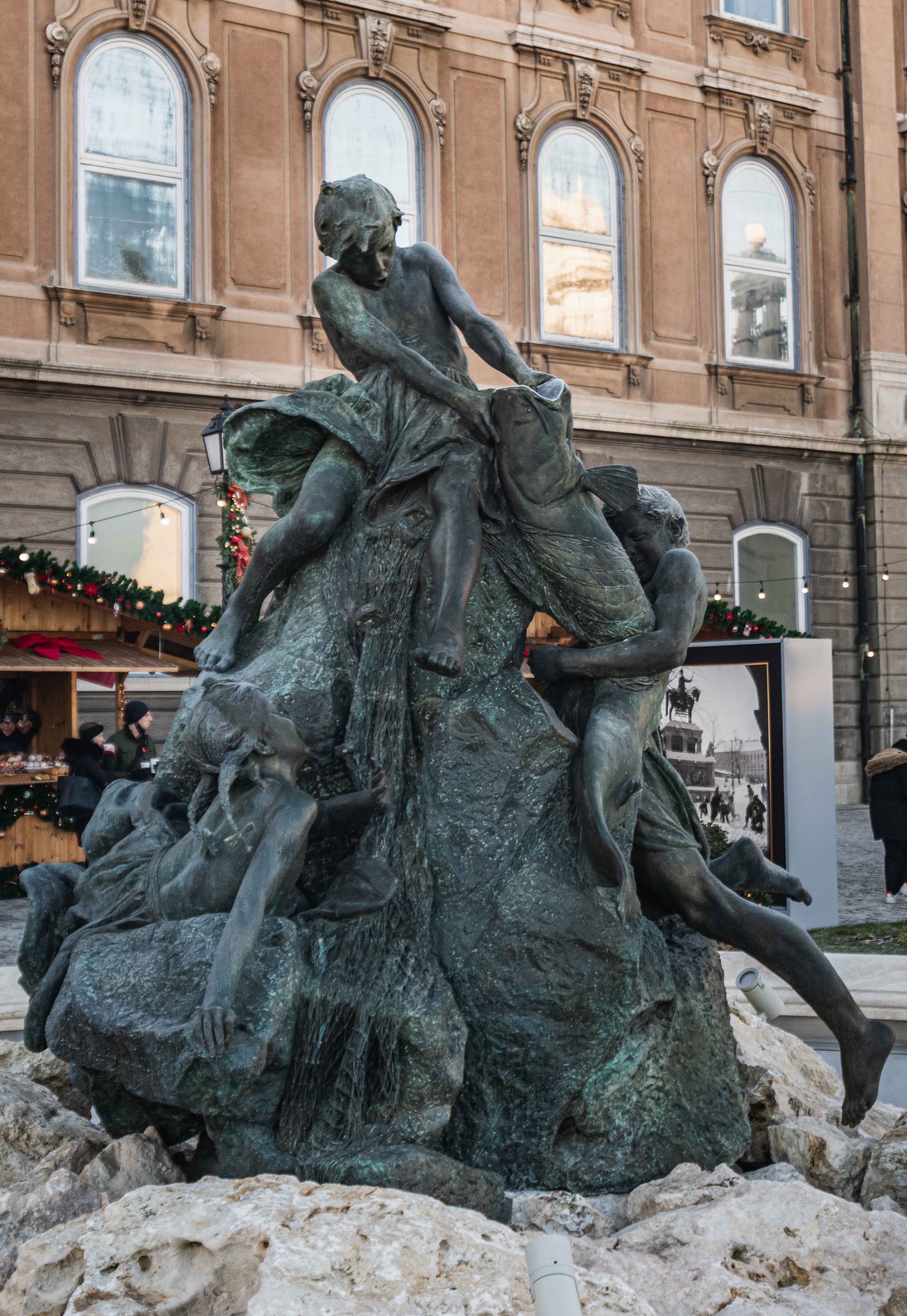
The renovated Fountain of the Fishing Children (Photo: Róbert Juharos / pestbuda.hu)
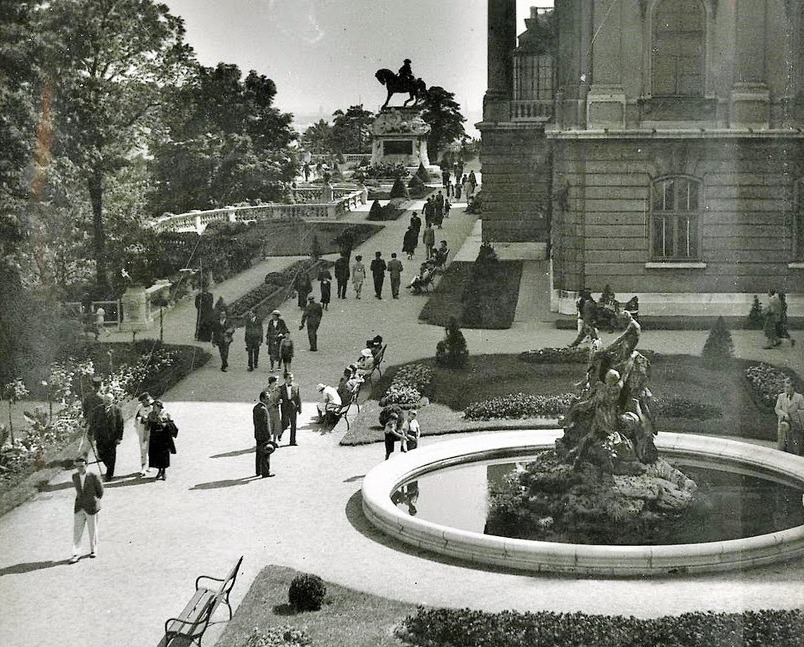
The sculpture designed by Károly Senyei in its original place in the 1910s (Source: FSZEK Budapest Collection)
The iconic sculpture damaged and toppled up in World War II, but not destroyed. However, after the partial renovation, it was not erected in their original location, but was taken away to the 8th District, to Rákóczi Square, where it was tested on the site in 1955 and, after restoration, it was finally erected there in 1957, in front of the Market Hall, in a much smaller pool.
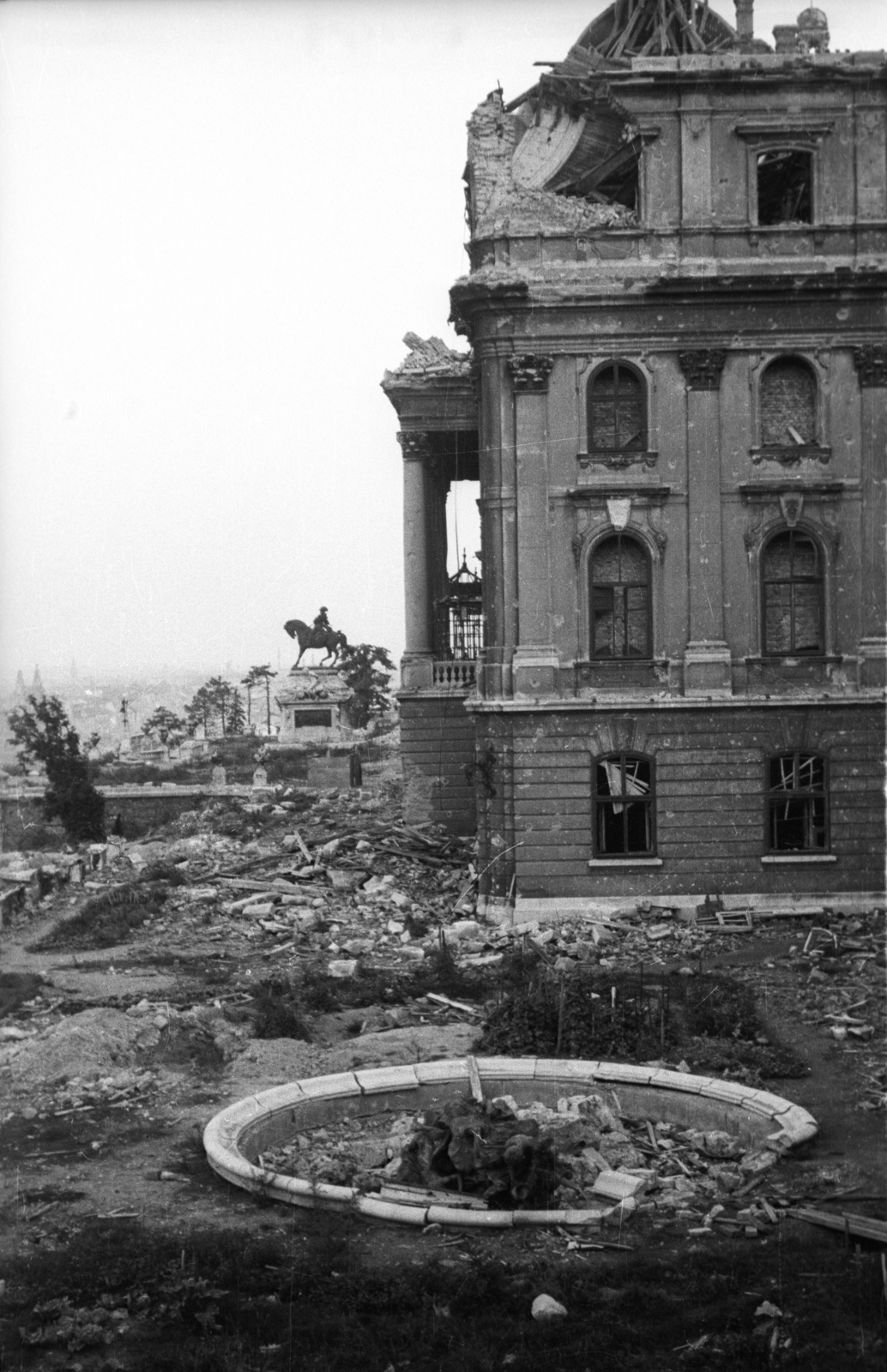
The siege damaged the statue but did not completely destroy it (Photo: Fortepan / No.: 5815)
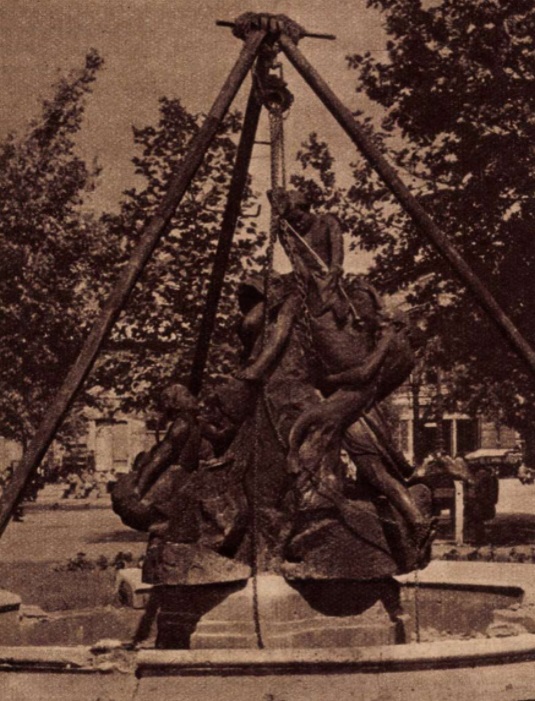
The statue was transported to Rákóczi Square, where it was finally erected in 1957 (Source: Érdekes Újság, 10 August 1957)
%2C%20a%20budai%20V%C3%A1rb%C3%B3l%201955-ben%20helyezt%C3%A9k%20ide.%20H%C3%A1tt%C3%A9rben%20a%20V%C3%A1s%C3%A1rcsarnok.%20Fortepan%20201488.jpg)
The Fountain of the Fishing Children in a small pool in Rákóczi Square with the Market Hall in the background (Photo: Fortepan / No.: 201488)
Until 1976, the public in Pest could see the statue of Buda, which was then relocated due to reconstructions, to its original location, the Savoyai terrace, but in a much smaller pool here than the original. Over the past nearly 50 years, this statue has also suffered numerous damage and insulation problems, and due to previously broken wires, it has not functioned as a fountain for many years. Specialists have now made a new pool for the sculpture from new waterproof reinforced concrete, which was made to its original size, making it nearly twice the size of the pool from 1976.
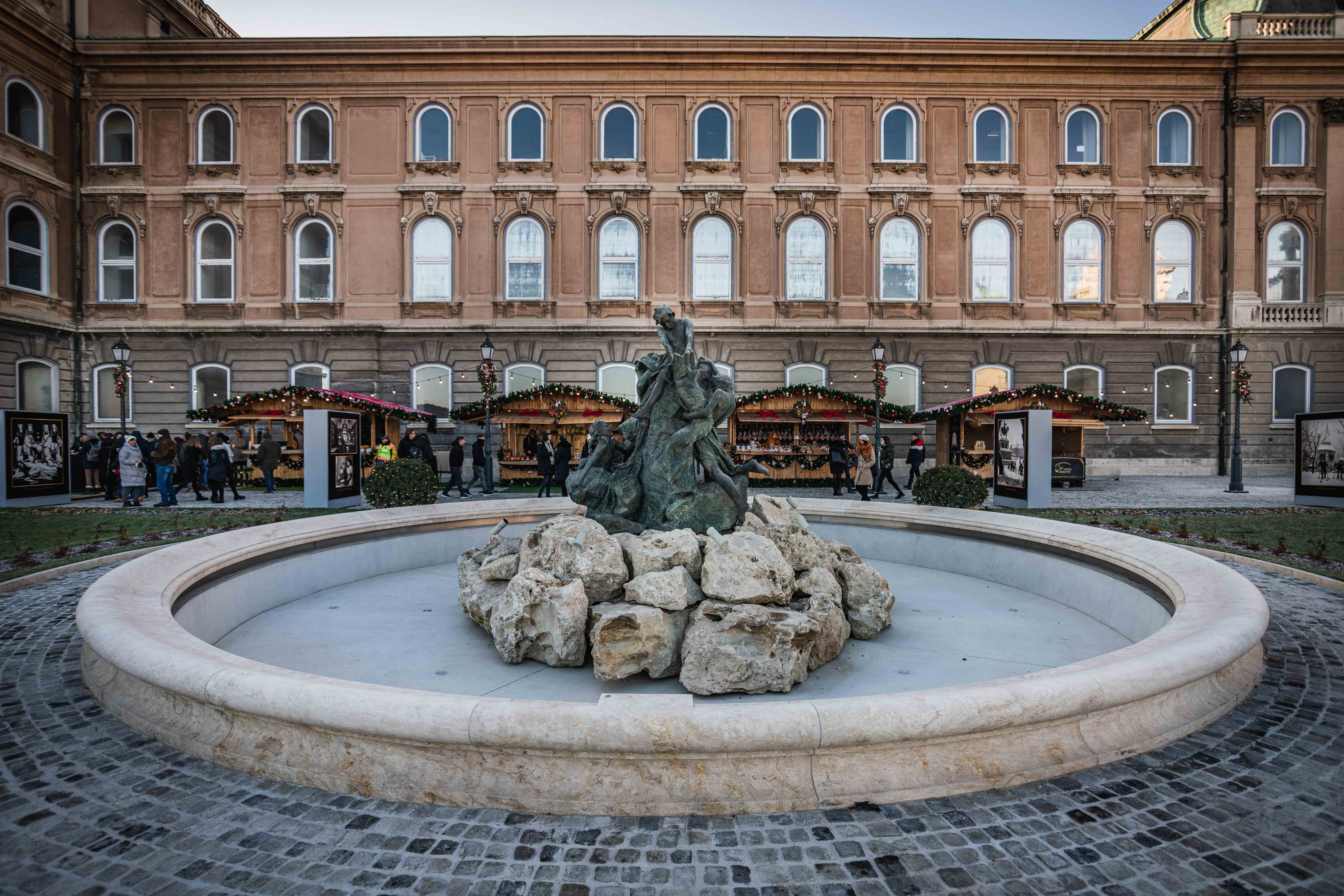
The renovated sculpture was placed in an original size pool (Photo: Róbert Juharos / pestbuda.hu)
The reconstruction of the bronze statue was greatly facilitated by the fact that, unlike the Matthias Fountain, it was possible to get inside the group of statues. The rusted parts, which had been replaced with steel in the previous restoration, were again replaced with bronze and, as far as possible, repaired to replace the bow of the little girl's pigtail and the missing parts of the fishing net.
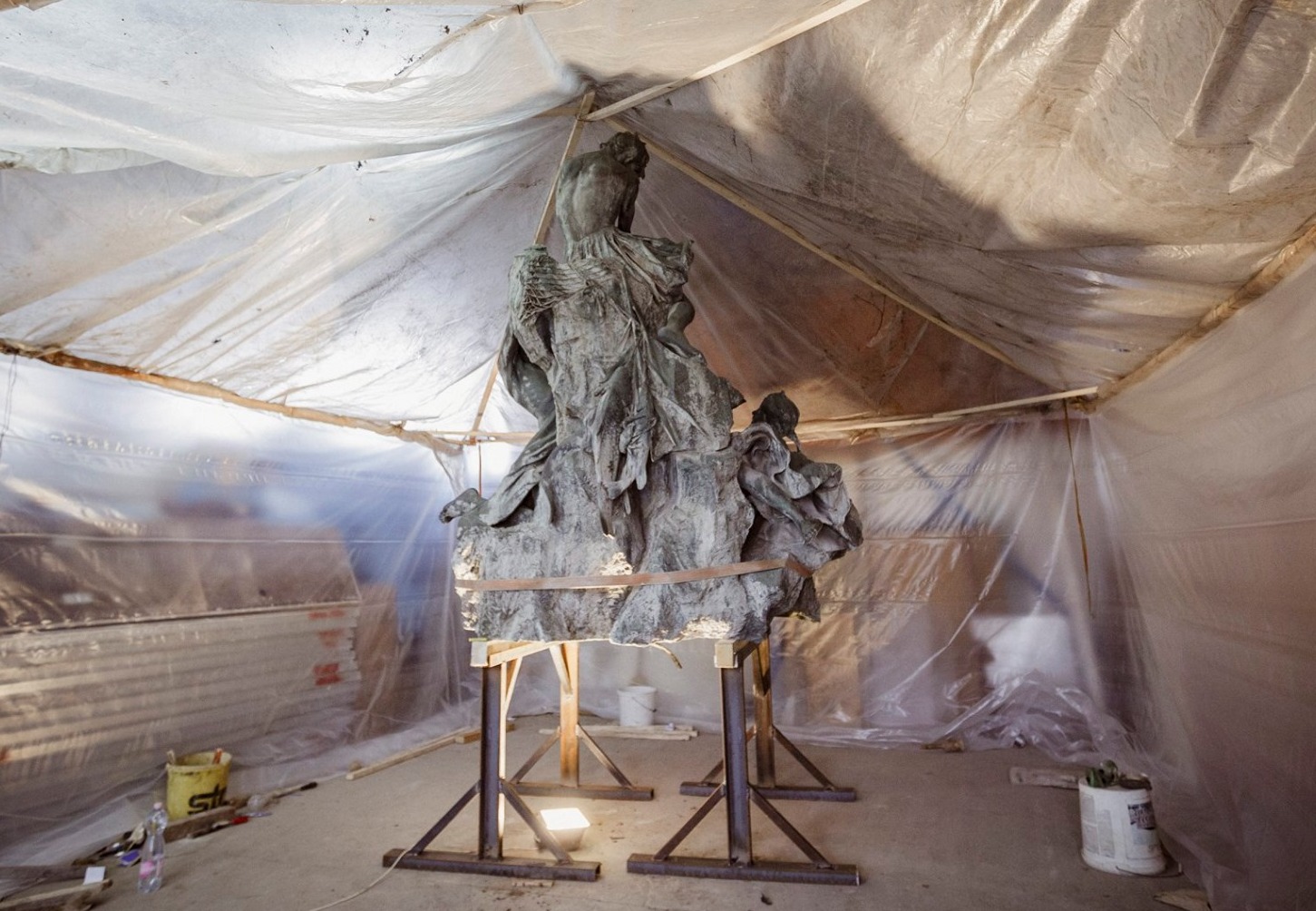
The restoration of the work was facilitated by the fact that it could be improved from the inside (Photo: Várkapitányság)
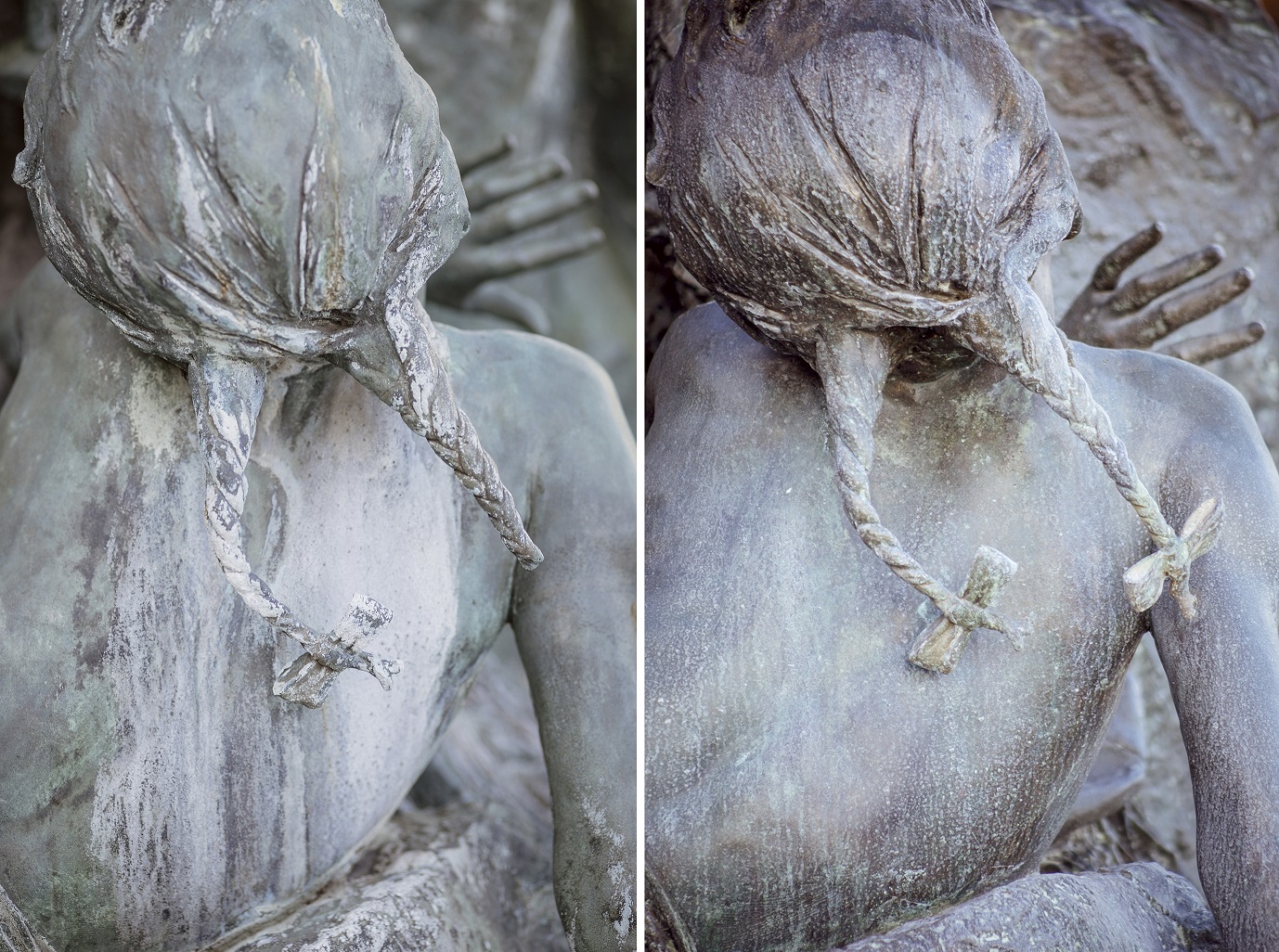
Every little detail on the statue has been corrected, so the little girl's bow has also been replaced (Photo: Várkapitányság)
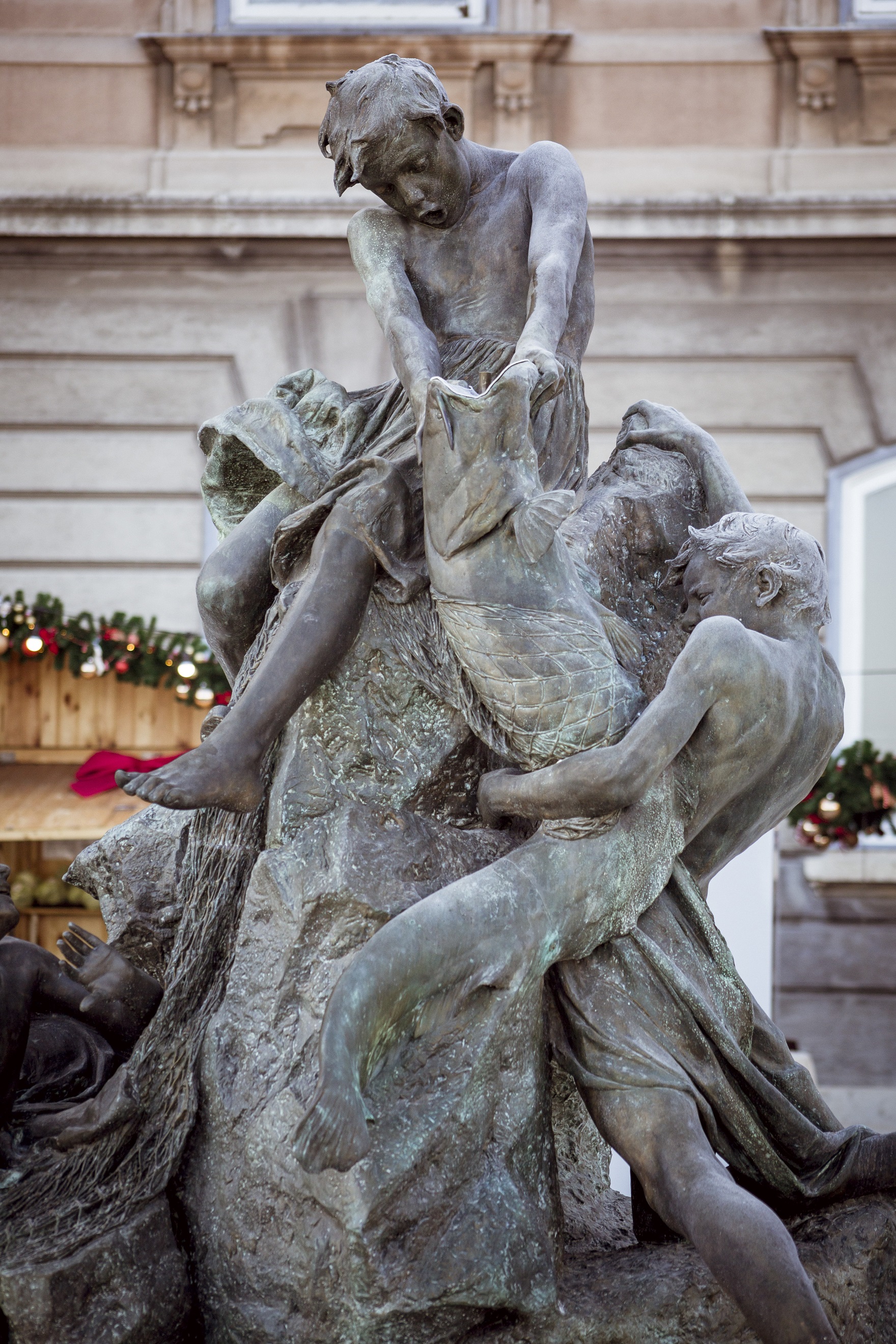
The two boys are fighting the catfish (Photo: Várkapitányság)
In the vicinity of the statue, the green surfaces and the coverings were renewed, as well as the public and decorative lighting. According to Hauszmann's ideas, the pool was placed among plant beds. The renovated fountain can also be seen in the winter, but water will only spill out of it in the spring.
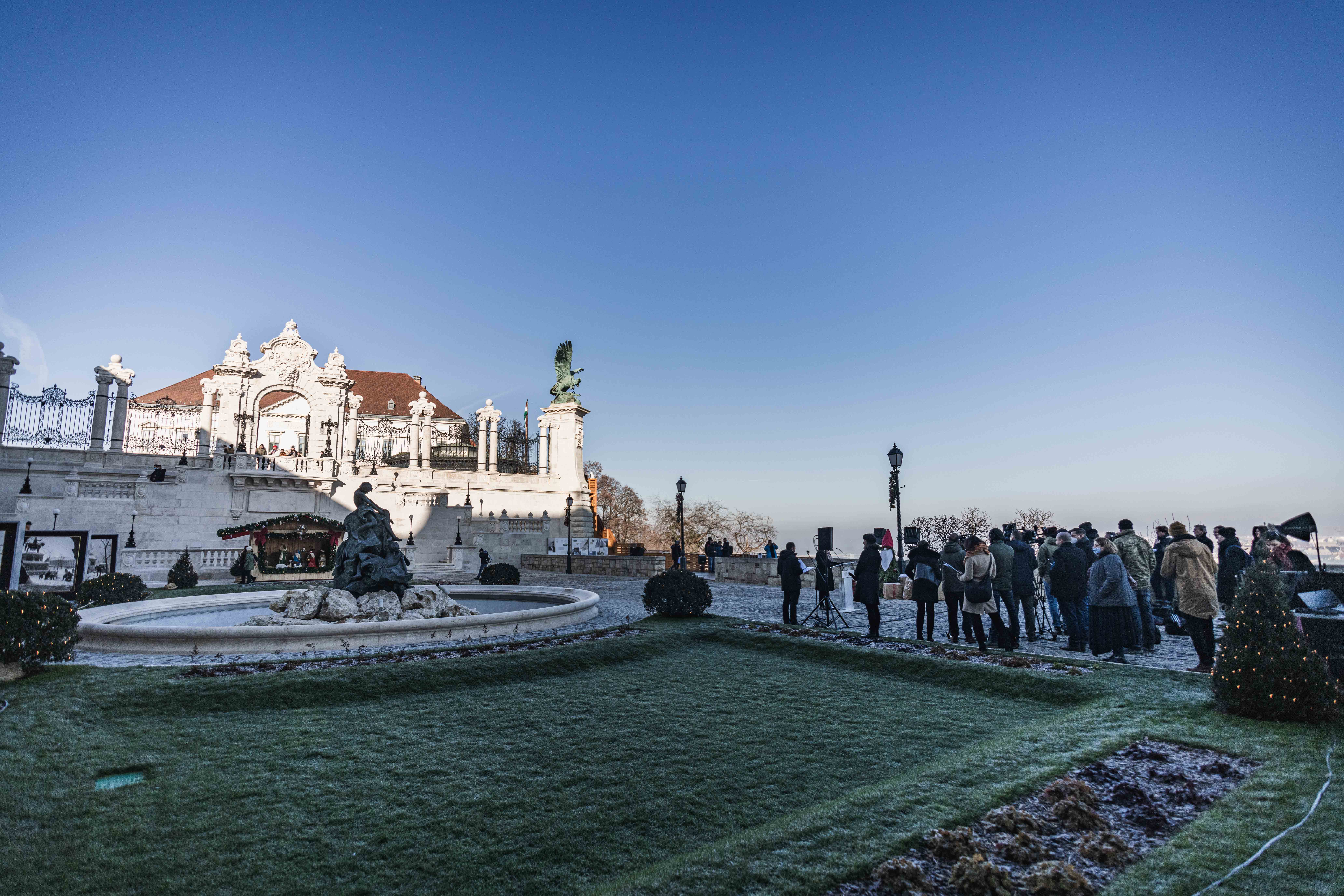
The environment of the sculpture was also designed by Alajos Hauszmann, so now everything was realized according to the original idea (Photo: Róbert Juharos / pestbuda.hu)
The Advent Fair and the open-air exhibition can be seen until 6 January in this part of the Savoyai terrace, so those who want to see these great monuments and one of the most beautiful panoramas should hurry to smuggle a little warmth in the great cold to relax. .
Cover photo: The Habsburg Gate in the background of the Fountain of the Fishing Children (Photo: Róbert Juharos / pestbuda.hu)

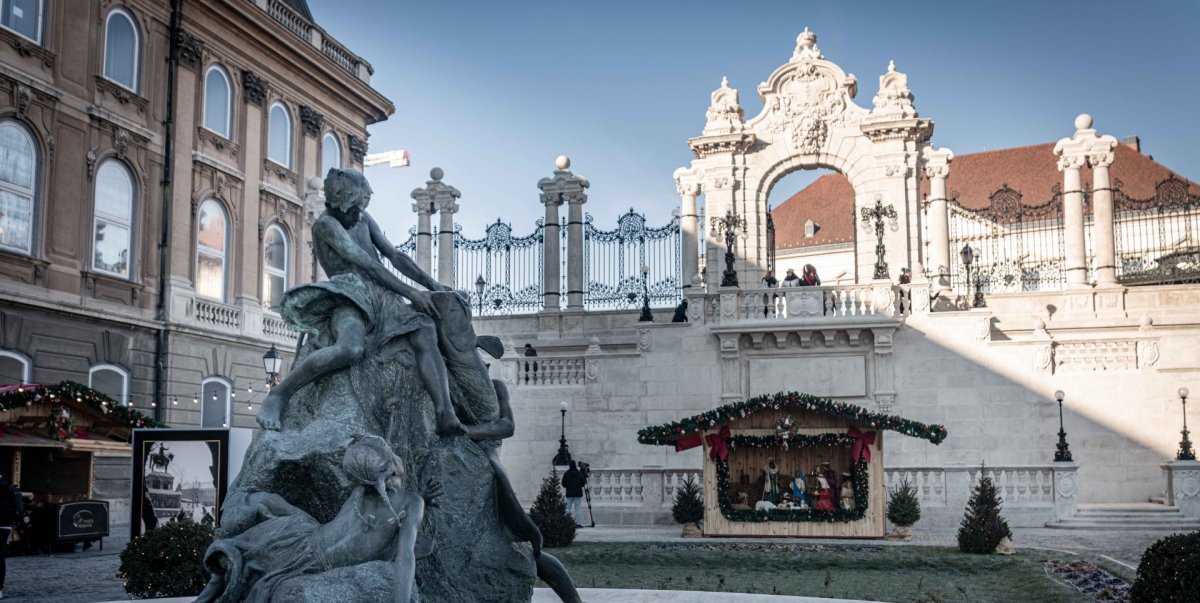


































Hozzászólások
Log in or register to comment!
Login Registration